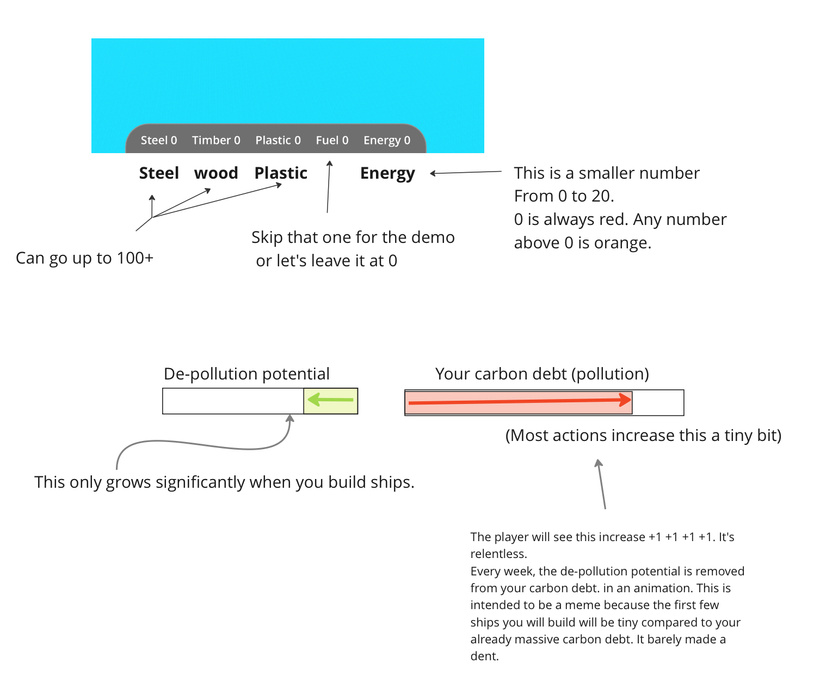Below you will find pages that utilize the taxonomy term “Godot”
Dev Log #3.5 - Godot integration
This week, we continue to design buildings in 2D first, while integrating the 3D buildings in Godot Engine early to check if it fits stylistically.
I’m in the process of testing out the pathing system previously established by Rie, and so far the 3D navigation regions seems to work. Voltairine jumped over the rocks to get to the kitchen, but we’re not sure if that’s a bug if she’s really fond of Maelle’s cooking.
Dev Log #2.8 - Art update
From lines to polygons, and back to lines
This game’s art style is heavily inspired both by lowpoly games, and by BD/manga style, with watercolor textures and black linework to add details.
Since our last dev-log, Khaleer advanced on the modeling of the building, (based on concept art by Amir ).
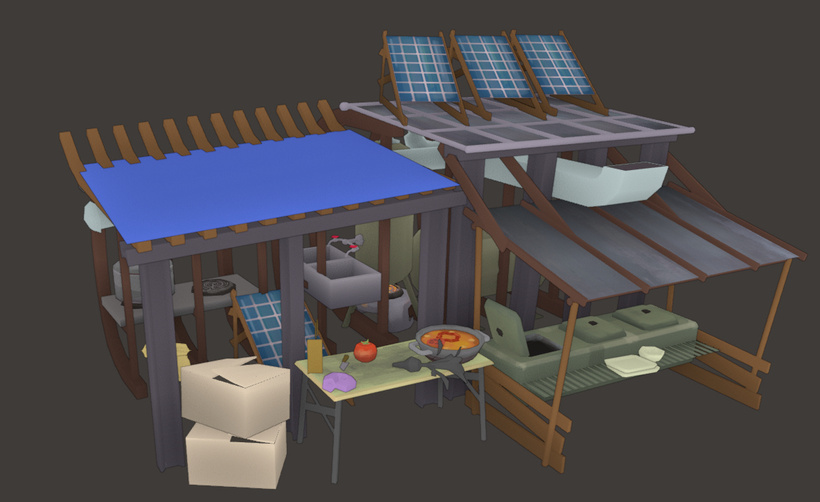
The first step is a block-in with mostly flat colors. Around this time, the UV space is laid out to facilitate painting textures in a 2D program (like Krita).
Shipyard: The story so far
A welcome video recorded and edited by Roberto Cuevas.
- We are using open source tools such as Godot Engine, allowing us to share and benefit from all the creative solutions and workflow improvements from the community.
- The Shipyard will stay indie to keep all creative control and make a game we want to play.
- Your patronage is appreciated and helps support our crew. Sharing the Patreon link or this video with friends also helps bring the game to life!
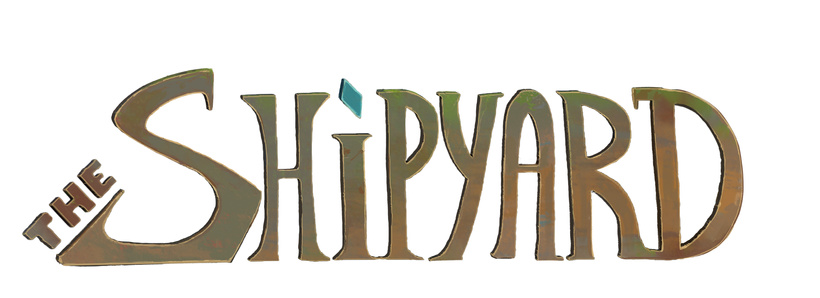
PS: We want to thank the yardies who are supporting us already, y’all are the best <3
Dev Log #2.5 - Ship-building UI and resource flows
Building a ship requires parts and components, which you make with metal plates, composites, and recycled ingots. Various buildings produce these materials and refine them into ship parts.
Some of these buildings consume electricity (🪫), which at first is easy to procure, but as the game progresses and storms keep knocking down the grid, you find yourself having to improvise a DIY micro grid (⚡️) for the shipyard to keep going.
Dev Log #2.4 - The separation of programming and art

Generally it’s considered best practice during prototyping for the art to be done in a separate pipeline, to work on top of “cubes that play well”.
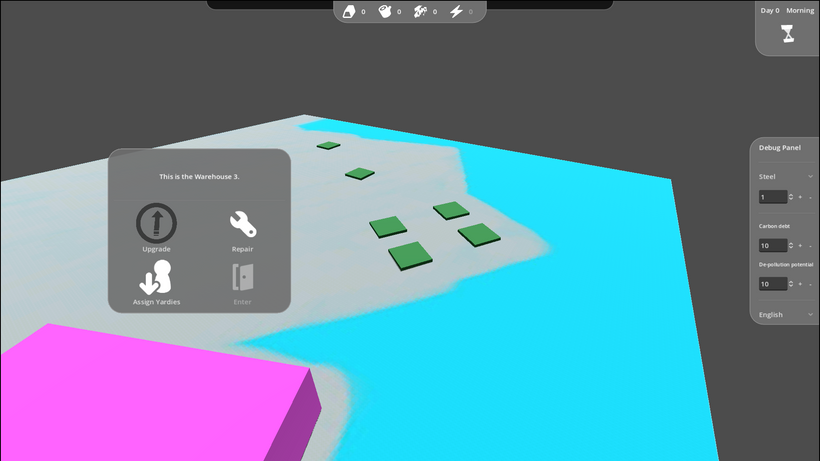
Godot Engine Programmer Evans (Giiba) calls this the “sea of cubes”. The point is maximum readability, and programmers to not need to wait for art.
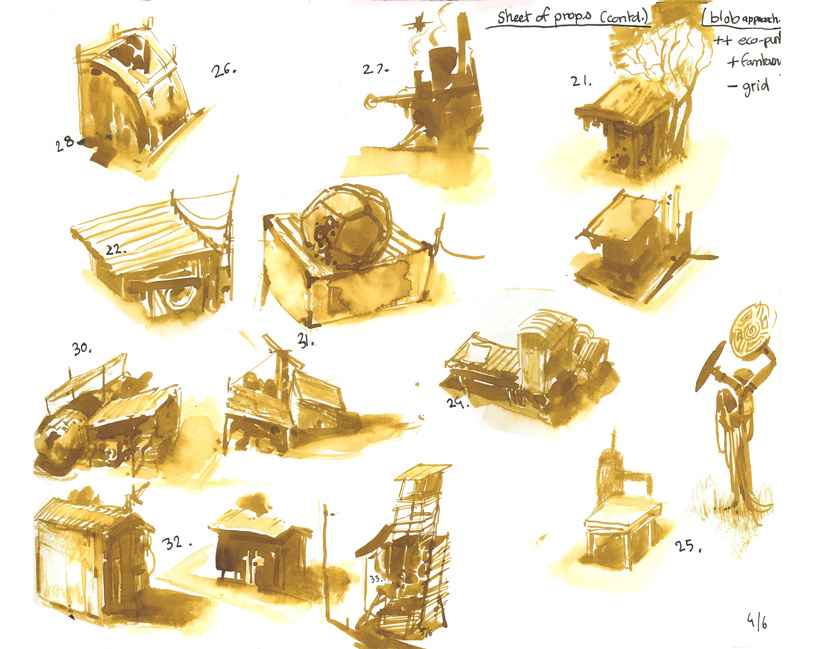
Meanwhile, the art iterations are about exploring the total possibility space of what this game could be, what it could look like.
Dev Log #1.8 - Implementing menus and scenes
Rie has done some incredible work and we now have a way to transition from the top down camera to inside the hangar, and from inside the hangar to the loft.
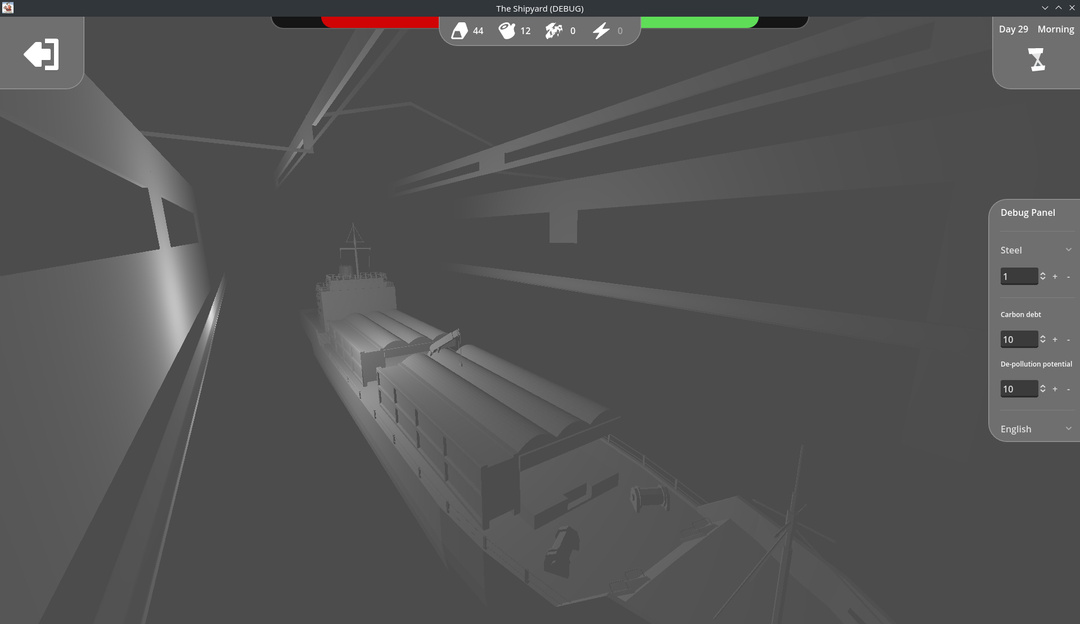
The resource bar was also implemented by Rie, following this design diagram:
